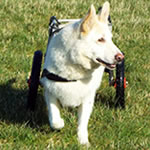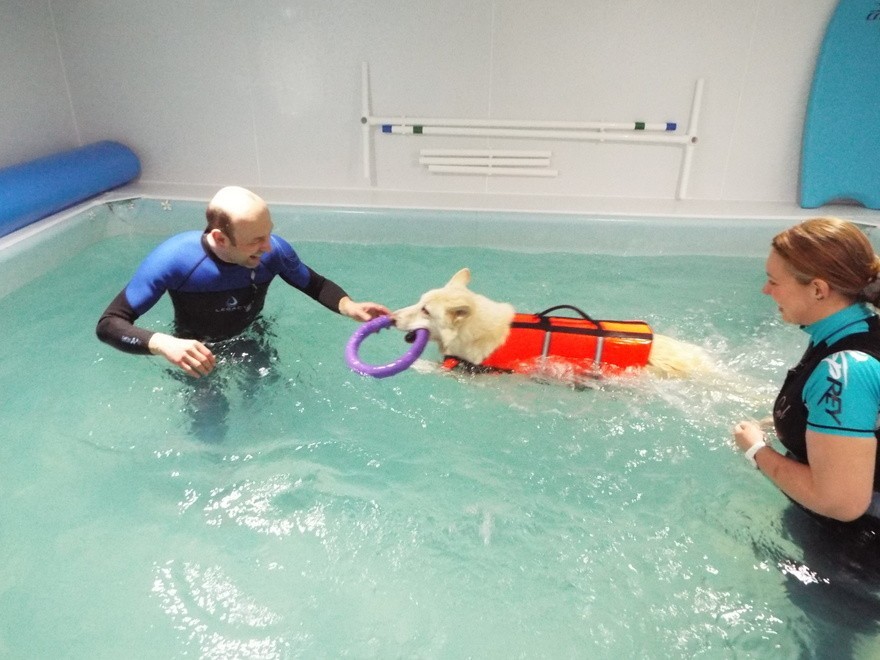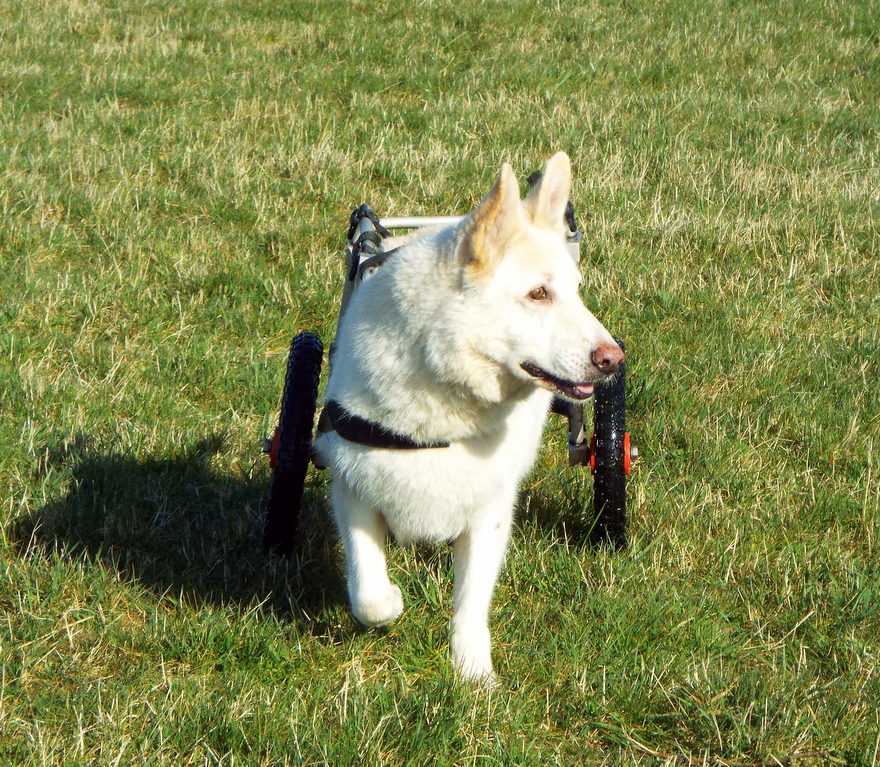
Daisy, a differently abled dog!
Daisy has degenerative myelopathy, a non-painful, progressive disease of the spinal cord that usually results in hind limb paralysis. At present, she can still move her hind legs, but they don’t support her weight and she can’t walk unaided. Indoors she drags herself around using her front legs.
Living with a disabled dog is a real challenge and we have altered our lifestyle to cope with her needs. So how does our day look? Well, it begins with Daisy plunging from the sofa when we get up, and to ensure she doesn’t hurt herself, we have a folded yoga mat in her landing spot! We use either a rear harness or (for sheer speed) we wrap a belly band under her gut and guide her outside for her morning ablutions, being careful not to stamp on trailing feet.
Then it’s time to get ready for her first walk of the day, and for this, she is ‘booted and suited’. Her feet are constantly dragging on the ground so we ensure that they are well protected with dog boots. She is then hoisted into her wheelchair which is made by Best Friend Mobility. We are delighted with it. It’s sturdy and has a flexible saddle which is comfortable for her and allows her freedom of movement.
She’s always eager to get going, yipping with excitement and the pressure is off of us for a while as she runs free in the field, chasing her favourite toy, the Puller, or sniffing out rabbits with the four other dogs. Occasionally she topples over and then it’s all hands on deck to get her upright and back in her chair, but whatever happens, she has a whale of a time!
Back from her walk, she’s assisted into the office and onto her bed. Her boots are removed, feet dried and cream applied to any sore areas (these are rare thanks to our prep, but they do happen). Then her feet are wrapped in lint and Fun Flex Bandages to prevent any damage when she’s dragging herself along the floor.
She is served breakfast on a stand to make it easier for her to eat sitting up, and for ‘elevenses’ she has her first dose of vitamins wrapped in a slice of ham and followed by a tasty biscuit. She is taking and a mixture of B Vitamins (mainly B12) and Biotin as it has been suggested that dogs with DM may be deficient in B12.
Then it’s snooze time for her but work time for us as we get an hour or so off.
At lunchtime, she is assisted outside to toilet then back to her bed for another biscuit and her afternoon snooze.
Late afternoon and we start gearing up for her second walk of the day. Dog boots on, harness on and hoisted into her wheelchair. On her return, her routine is similar to the morning.
Another snooze until dinnertime.
After dinner, outside for more ablutions, then she’s assisted onto the sofa next to the woodburner, where she awaits her evening treat. Then more snoozing until her final outing to the toilet just before bed, and her final biscuit of the day.
She generally sleeps through the night, but has been known to have the odd accident so we have a special cover for the sofa. We have also covered the floors in hardwearing, industrial rubber matting which not only makes clearing up after her a lot easier, it also gives her a grip on the floor so she can pull herself along.
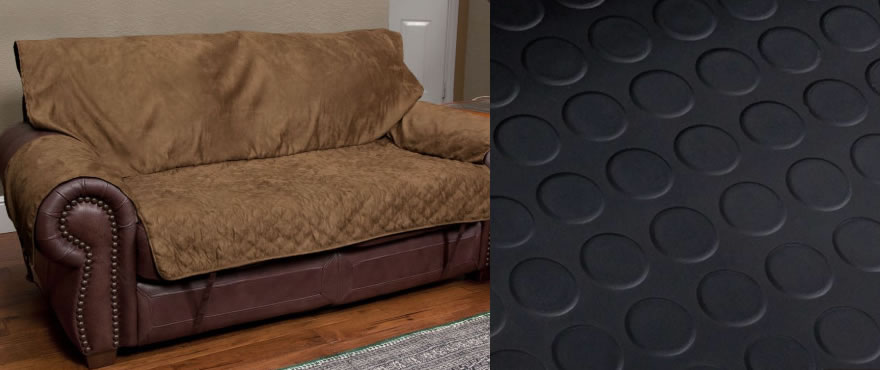
The next day we begin the whole process again.
It is physically and mentally exhausting looking after her, she weighs around 25kg so it takes strength to lift her and she’s not the most cooperative dog to deal with. Not to mention the constant worry about her deteriorating health. We are very fortunate to be working from home which allows us to care for her 24/7, so she’s rarely left alone.
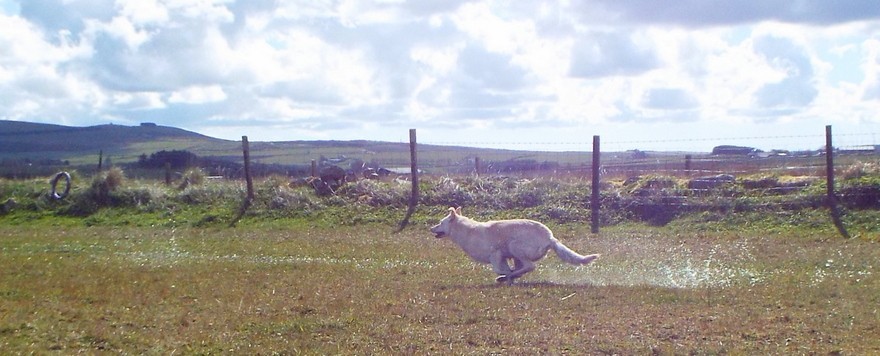
DM is a horrible condition, and to see our once healthy, very active dog dragging herself around is heartbreaking. However, she still loves going out, she adores chasing her Puller and she also swims regularly which gives her freedom from her paralysis as all four limbs seem to work perfectly in the water.
We know what’s in store for us. She will continue to deteriorate and despite all our efforts, there is nothing that can be done to prevent it. We just care for her as best we can, keep her comfortable and happy take hundreds of pictures so we will always have the memories. We are amazed at the way she has adapted to her situation and feel so proud of her when she trundles along in her wheelchair.
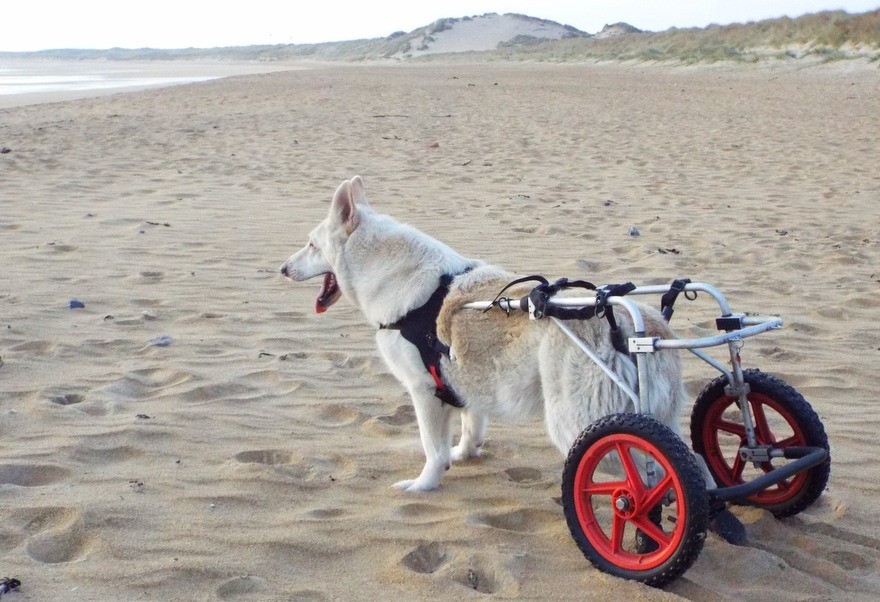
We were really lucky to get her wheelchair through the Finding a Cure for DM Foundation. They run a Wheels to Help Me scheme. By making a donation to the charity you can borrow a set of wheels that have been kindly donated by parents of DM dogs. Her particular wheelchair has two tags on the back with the names of its previous occupiers. Such a lovely way to remember them and we are so grateful for their generosity. The wheels will, of course, be returned to them at some future date, but we don’t want to think about that just yet.
